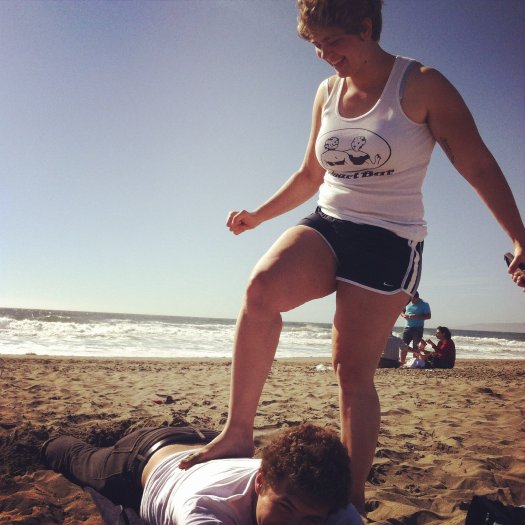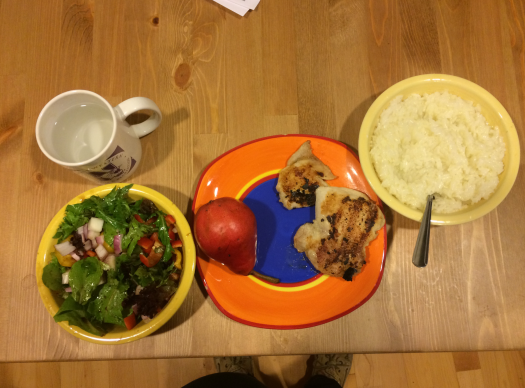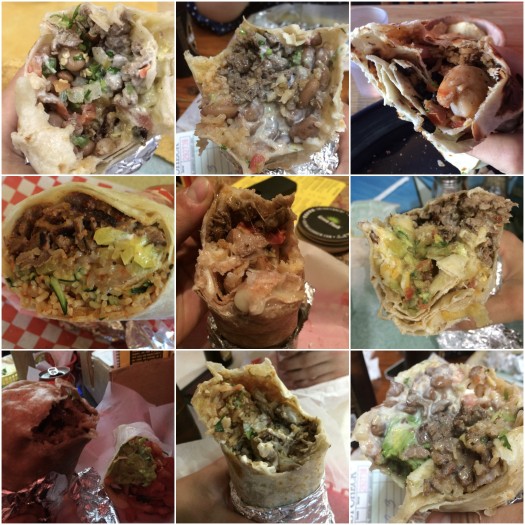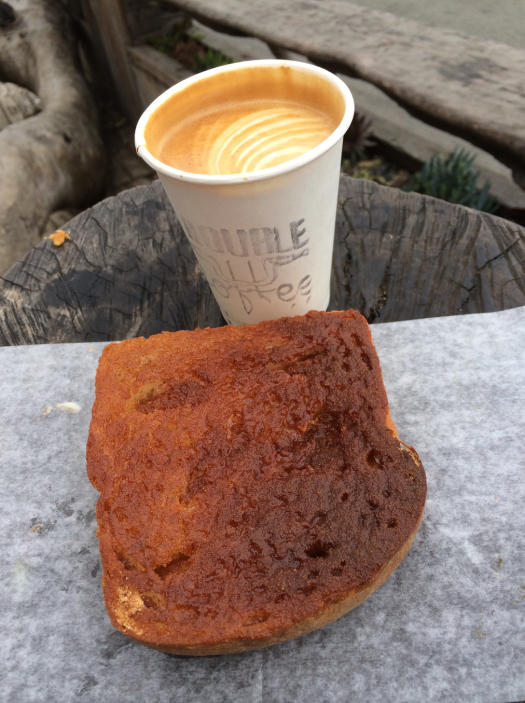Today is Halloween, which I consider the unofficial start of another holiday season. This time of year is filled with celebrations and gatherings. Along with this comes an endless supply of rich, sweet, and savory foods. All of the year-end holidays center around some kind of feasting and most people have many weekends in a row filled with parties and events for work, family, and friends.
For many people, the joy of this time of year is overshadowed by anxiety surrounding food. This is especially true for anyone who has been working hard to build healthy eating habits or who has recently lost a lot of weight.
You may be asking yourself:
- How can I navigate the next few months when I am constantly bombarded with less-than-healthy foods?
- Will I gain tons of weight and cancel out the hard work I’ve been putting in the rest of the year?
- Will holiday feasts trigger dormant disordered eating habits like bingeing?
I know my clients and I struggle with these questions year after year.
This week, I want to share 3 strategies for dealing with Halloween, Thanksgiving, and all the other upcoming holidays. After reading this post, I hope you will be able to arm yourself with the mindset tools you need to enjoy a stress-free holiday season.

Option 1: Stick with the plan and don’t indulge.
How it works
This option requires you to refrain from indulging in treats during the holiday season. Essentially, you will continue with your current eating plan. This means no Halloween candy from the break room, no pumpkin pie, and no extra drinking at office Christmas parties.
At big holiday feasts, you will need to stick with protein, vegetables, and carbs and fats that fit within your macros or meal plan. In the most extreme cases, you may need to bring your own food to certain functions when you know you won’t have options available to fit your plan.
Who it works for
This is the best option for anyone who needs to stay in great shape this time of year for upcoming events including physique competitions, photo shoots, weddings, beach vacations, etc.
It may also be the best option for people who have struggled with severe disordered eating. Sometimes the best course of option is total abstinence from trigger foods. If you chose to abstain from certain foods year round, the holidays may not be the best time to reintroduce them to your diet.
Problems
I don’t recommend this option for several reasons.
If you bring your own food to family gatherings, you may be mocked or receive disgruntled looks from other guests. Expect to deal with lots of stress and difficult decisions about which events to attend and which you may need to skip.
Telling yourself you will abstain also sets you up for failure because it is very difficult to follow this course of action. When you inevitably do decide to treat yourself, it is much more likely you will succumb to the all-or-nothing mindset and slide into an episode of binge eating.
Read More: 3 Strategies to Combat All-or-Nothing Eating
The reality is this level of discipline is impractical and totally unnecessary for most people. Holidays are about celebrating and food has always been an important part of celebrating. Removing yourself from the festivities creates unnecessary stress and tension between you and loved ones.
Option 2: Choose your indulgences and set clear guidelines
How it works
With this option, you need to plan and make decisions regarding how you will handle the holiday season. Think about the holiday foods you most enjoy and those you can do without. Honestly evaluate your own tendencies with food and set guidelines that will allow you to enjoy yourself while still preventing you from eating everything in sight.
Here are a few example guidelines you could use:
- Limit yourself to one plate of food. Take a little bit of everything you want to try rather than loading up your first plate and having to return for seconds.
- 50% of your plate veggies, 25% protein, 25% other carbs and fats. This ensures you are eating a well-balanced meal while still getting to sample whatever you want.
- Be picky with your indulgences. Only eat foods that taste amazing. Your grandma’s pecan pie, an unusual cocktail at a fancy party, or a favorite hometown speciality you rarely eat would be good choices. Grocery store sheet cake, Halloween candy in the break room, and other generic treats you can have anytime are not worthy indulgences.
- Follow the “law of first bites.” Stop eating a food when it ceases to taste just as amazing as it did when you started. You don’t have to finish everything on your plate.
- Choose to indulge in some types of foods but not others. For example, if you don’t really have a problem with alcohol but you always overeat sweets, set some guidelines for desert but allow yourself to drink whatever you want. You may choose to totally abstain from certain trigger foods but freely eat other foods.
- Eat slowly. Enjoy your food. Take a sip of water in between bites. When food is in your mouth, your fork should be on your plate.
Who it works for
This is the best option for people who have been working hard to change their bodies and improve their eating habits. It allows you to relax the reins a bit and enjoy a well-deserved mental break without totally losing control or diving into a mountain of deserts.
If you want to relax a bit this holiday season but don’t have a long history of making good food choices, establishing some guidelines to prevent things from getting out of hand is the best plan of action.
Problems
There aren’t any obvious drawbacks to this option, but it can take a lot of work and requires constant self-evaluation. As you are moving through the season, check-in with yourself periodically to see how you are doing.
Questions for self-evaluation include:
- How is this plan working for me?
- Am I feeling myself start to lose control?
- What am I handling well?
- Where do I need to tweak or modify my plan?
- If I messed up, how can I learn and do better at the next holiday meal?

Option 3: Eat whatever you want, but let go of guilt
How it works
With this option, you release yourself from all rules surrounding food for a while. You can truly eat whatever you want, whenever you want it. What I’ve found is although people who follow this approach eat a lot of junk at first, those who have truly adopted a healthy lifestyle will still make good choices most of the time.
The most important caveat to this option is you must let go of all guilt and shame surrounding your food choices during the holiday season. Indulging in lots of less-than ideal food and then beating yourself up about it afterwards is terrible for your mental health and peace of mind. If you want to indulge, indulge. But tell yourself you won’t tolerate any negative self-talk after the fact.
Who it works for
This option works for people who have a rock-solid relationship with food. If you are the kind of person who can eat one serving from a bag of chips or a candy bar and then put it away, this option could work well for you.
If you don’t think you can handle this, I recommend following option 2 and establishing some guidelines to help when you are most vulnerable.
Problems
If you haven’t done the work to develop a healthy relationship with food, this option can lead to disaster. I learned this the hard way.
Last year, I decided I would treat the week of Thanksgiving as a total diet break. Over the course of five days, I went completely overboard with my eating. Every night I went to bed so stuffed I was in physical pain. I ate everything I possibly could just because I told myself it was ok. Often times, I didn’t even truly enjoy what I was eating.
After the week ended, I had an emotional breakdown. I felt totally disgusted with how out of control I had gotten during the week. After a lot of back and forth texting with my coach and a few weeks of normal eating, I returned to my pre-Thanksgiving weight with some important lessons learned.
One good thing to come out of this experience was the realization that feeling guilt and beating myself up over my “screw-ups” was counterproductive and ultimately detrimental to my progress. These days, if I make poor food choices I rarely engage in negative self-talk. Instead, I give myself a clean slate the next day and get right back to plan.
Read More: 6 Things I Learned from a Year of Online Training with Bryan Krahn
Reduce holiday stress
As with most things in your health and fitness journey, successfully navigating the holiday season requires preparation and planning. Remember that you don’t need to be 100% on plan year-round in order to look and feel great. Scheduling some relaxed periods that coincide with other events in your life (such as holidays and vacations) gives you a much needed mental break and may actually help your progress long-term. Be honest with yourself about what you need to put yourself in the best position for success.
If you want help navigating the holiday season this year, please fill out an application for my online training program here.












 Me now vs me at my leanest
Me now vs me at my leanest











